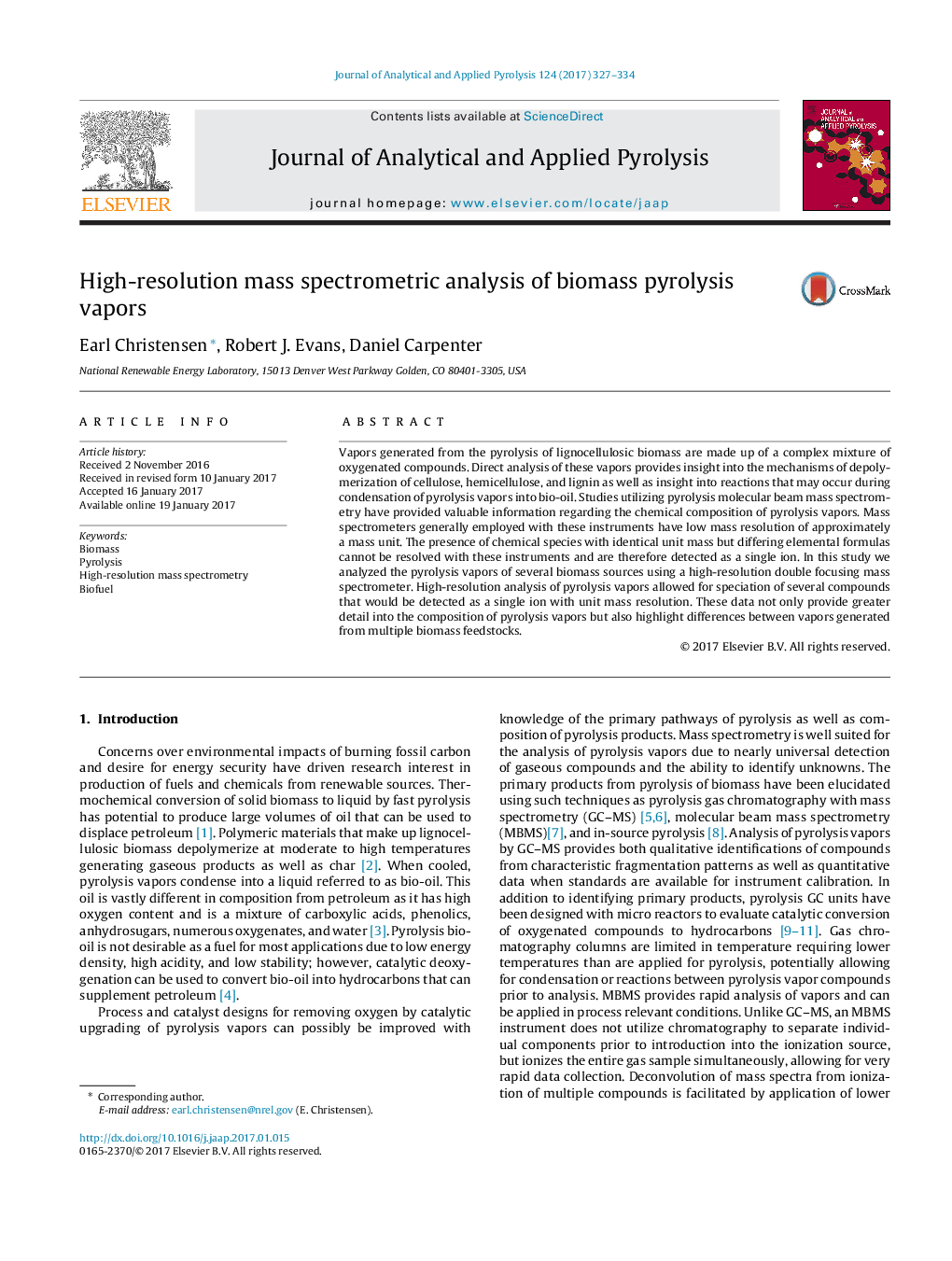| Article ID | Journal | Published Year | Pages | File Type |
|---|---|---|---|---|
| 5134601 | Journal of Analytical and Applied Pyrolysis | 2017 | 8 Pages |
•High-resolution MS for detection of primary pyrolysis products.•Lower-resolution MS unable to speciate same unit mass components of vapors.•Differentiation of biomass types from spectra with principal component analysis.•Improved speciation of pyrolysis vapors.
Vapors generated from the pyrolysis of lignocellulosic biomass are made up of a complex mixture of oxygenated compounds. Direct analysis of these vapors provides insight into the mechanisms of depolymerization of cellulose, hemicellulose, and lignin as well as insight into reactions that may occur during condensation of pyrolysis vapors into bio-oil. Studies utilizing pyrolysis molecular beam mass spectrometry have provided valuable information regarding the chemical composition of pyrolysis vapors. Mass spectrometers generally employed with these instruments have low mass resolution of approximately a mass unit. The presence of chemical species with identical unit mass but differing elemental formulas cannot be resolved with these instruments and are therefore detected as a single ion. In this study we analyzed the pyrolysis vapors of several biomass sources using a high-resolution double focusing mass spectrometer. High-resolution analysis of pyrolysis vapors allowed for speciation of several compounds that would be detected as a single ion with unit mass resolution. These data not only provide greater detail into the composition of pyrolysis vapors but also highlight differences between vapors generated from multiple biomass feedstocks.
